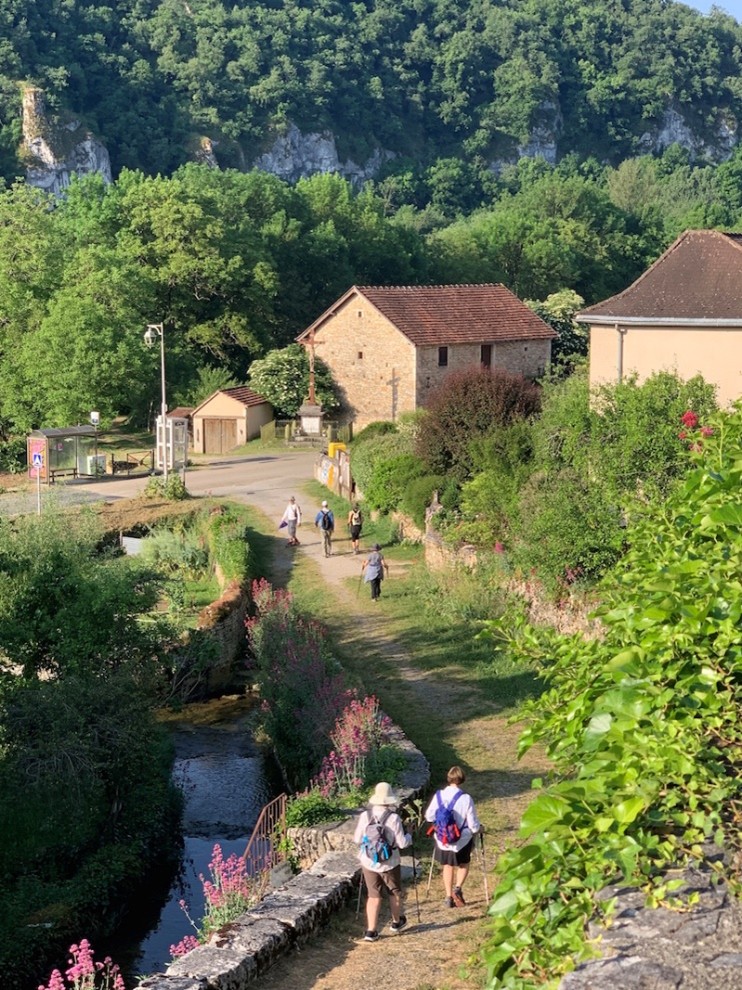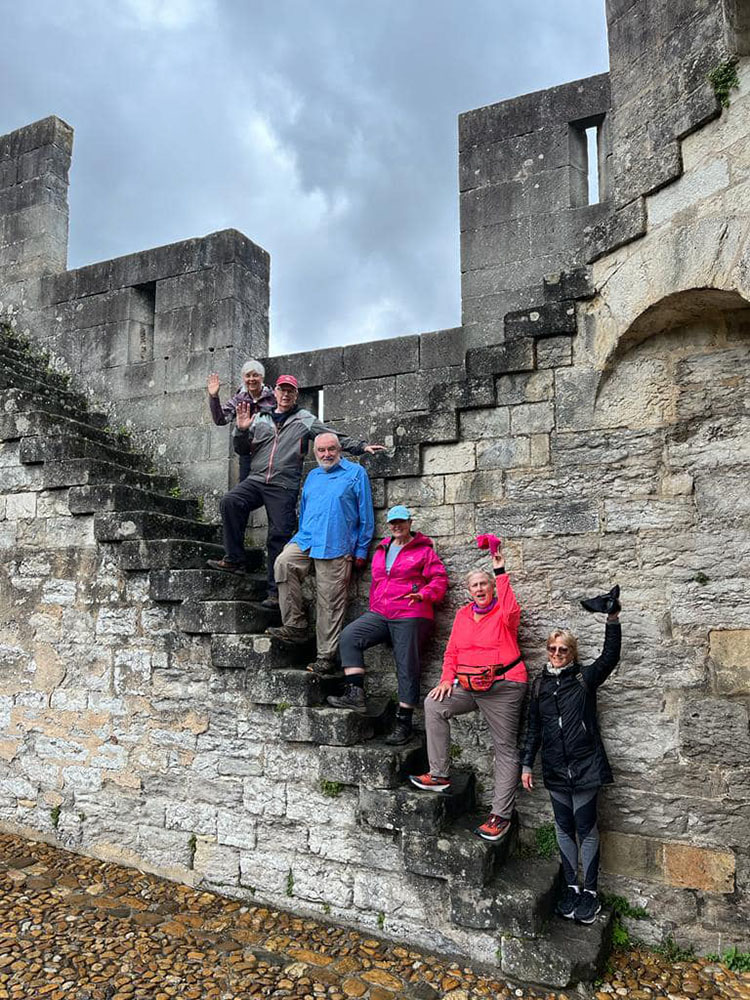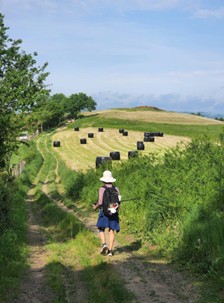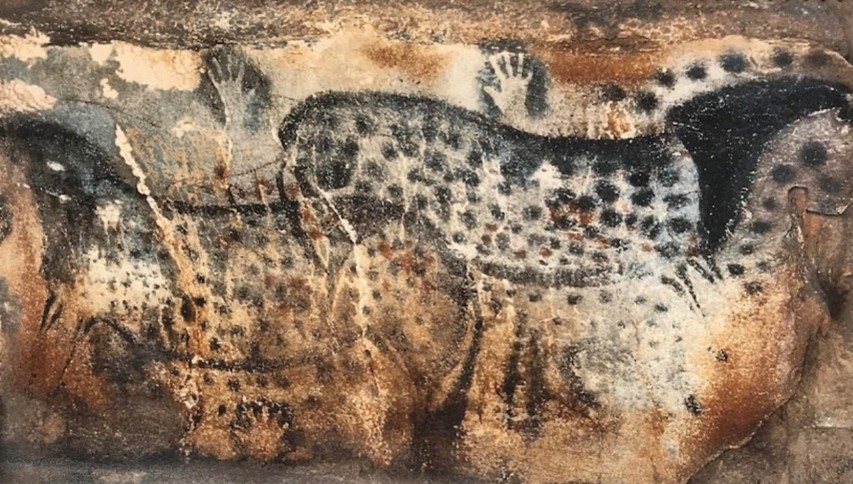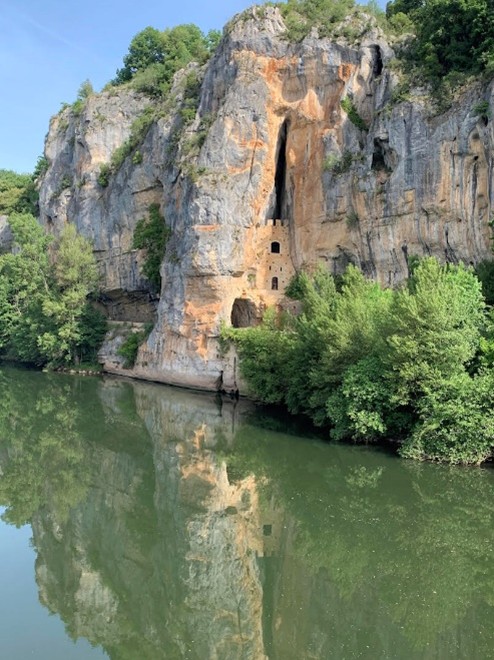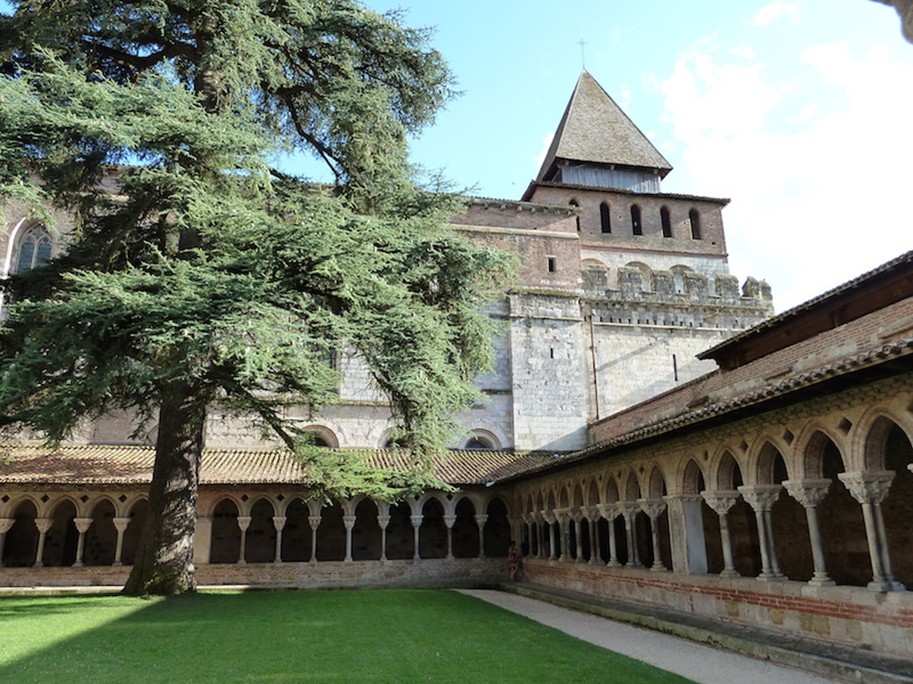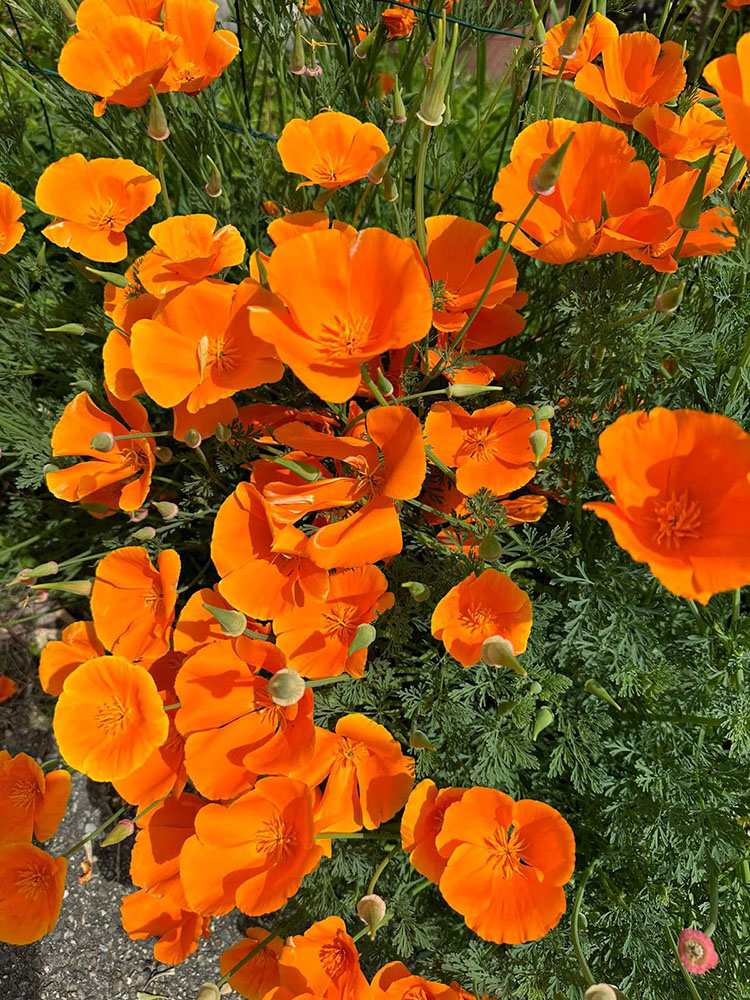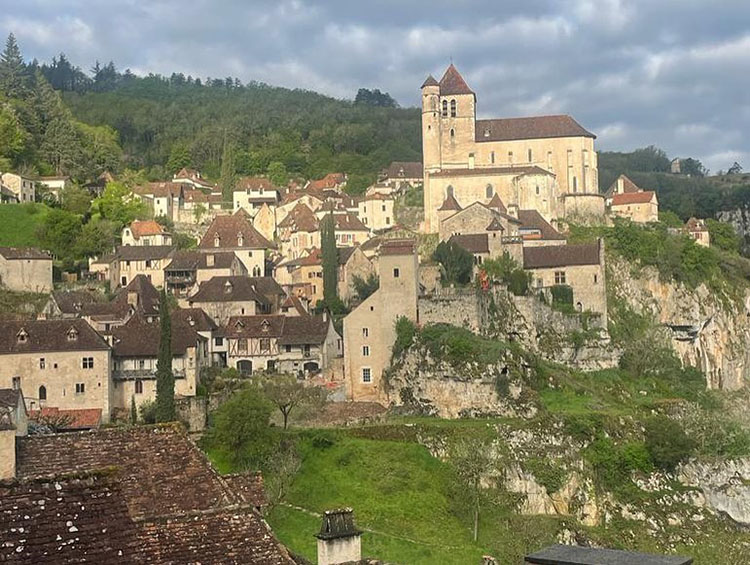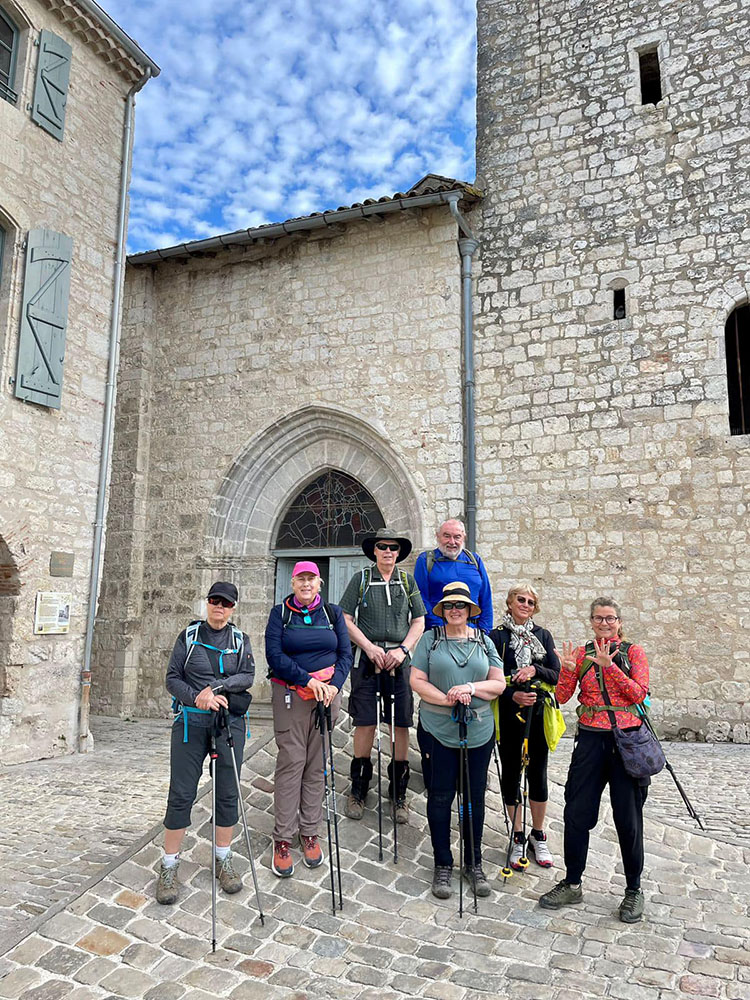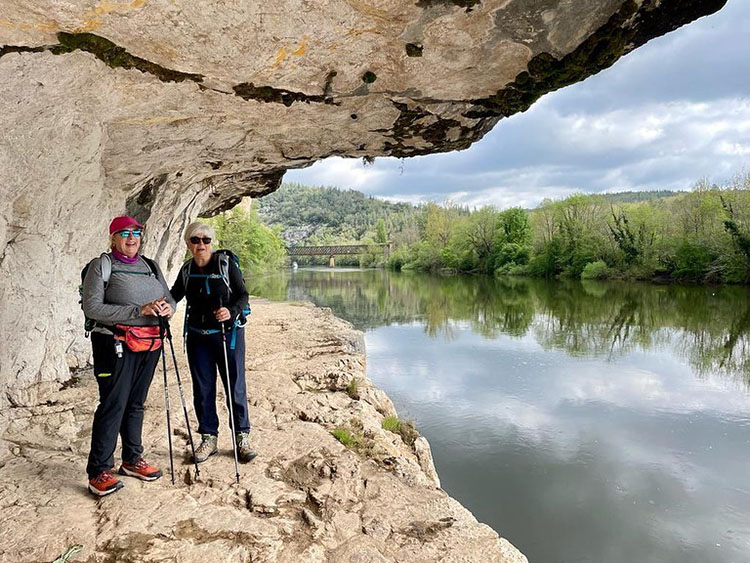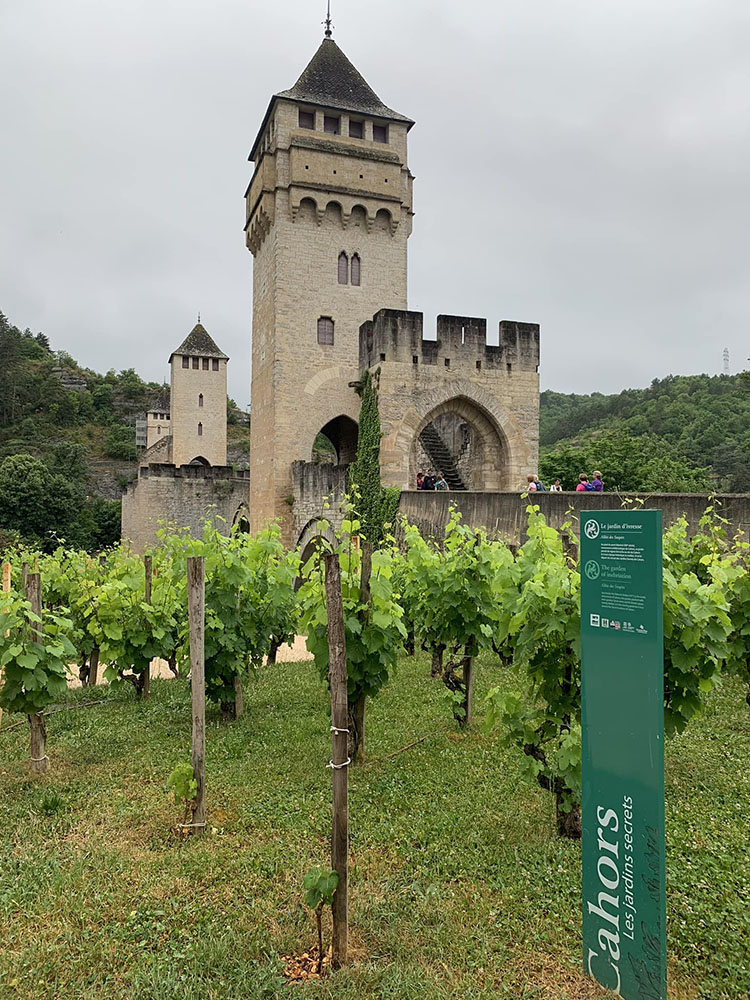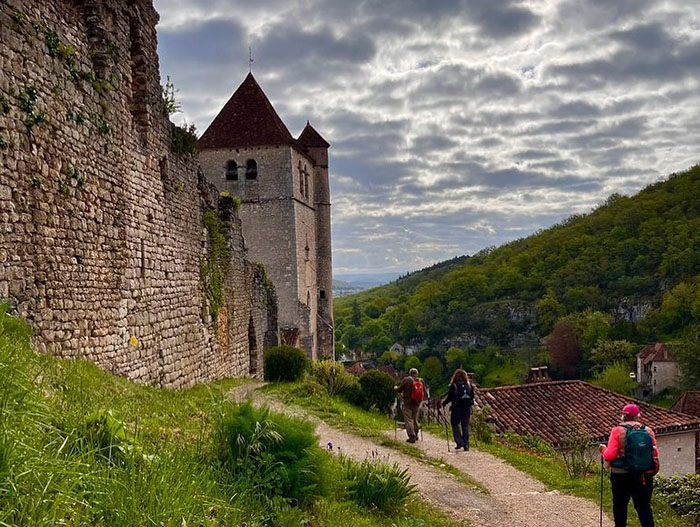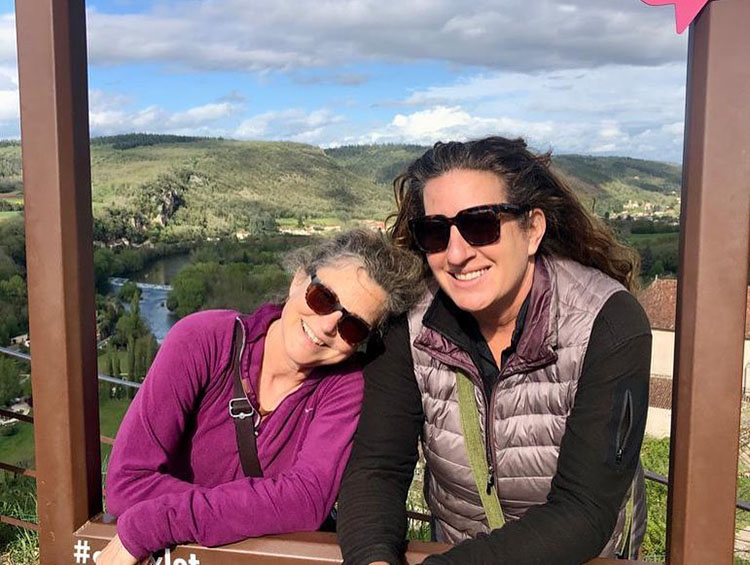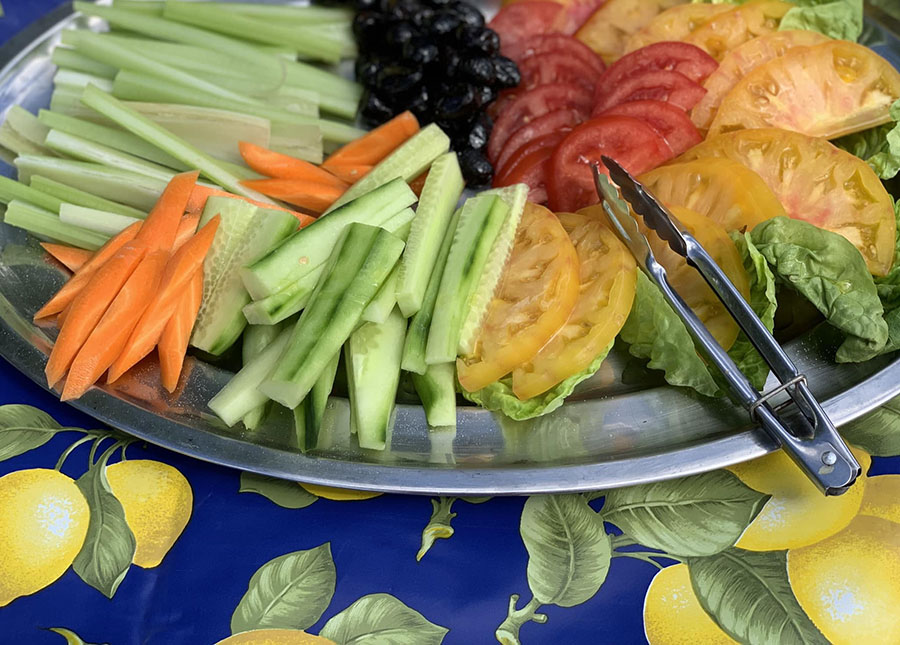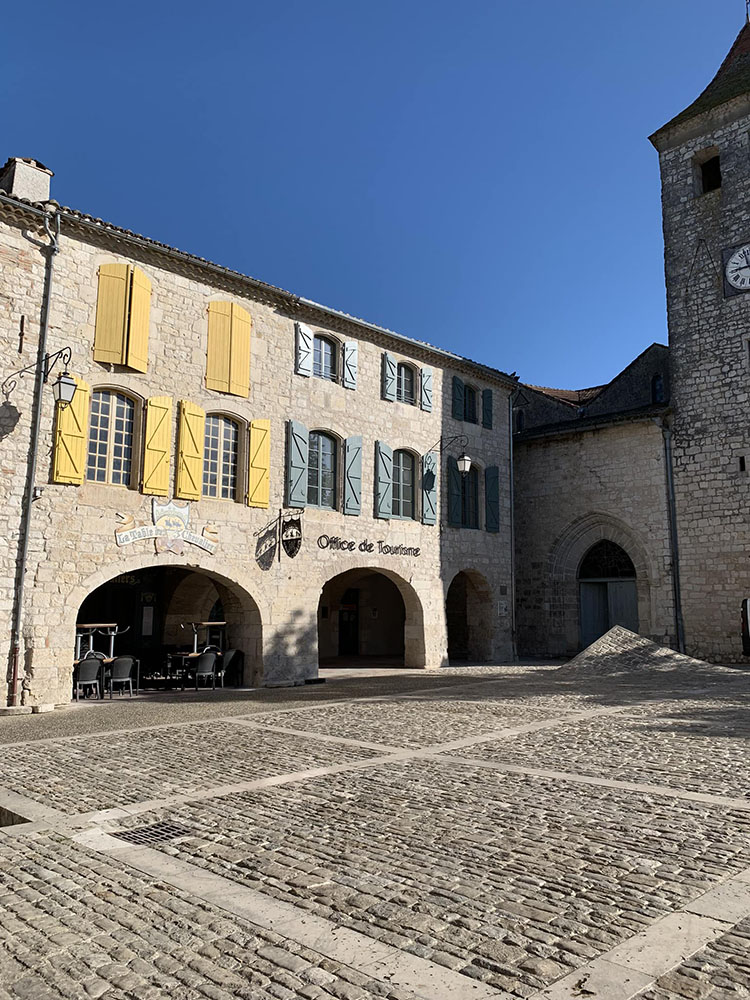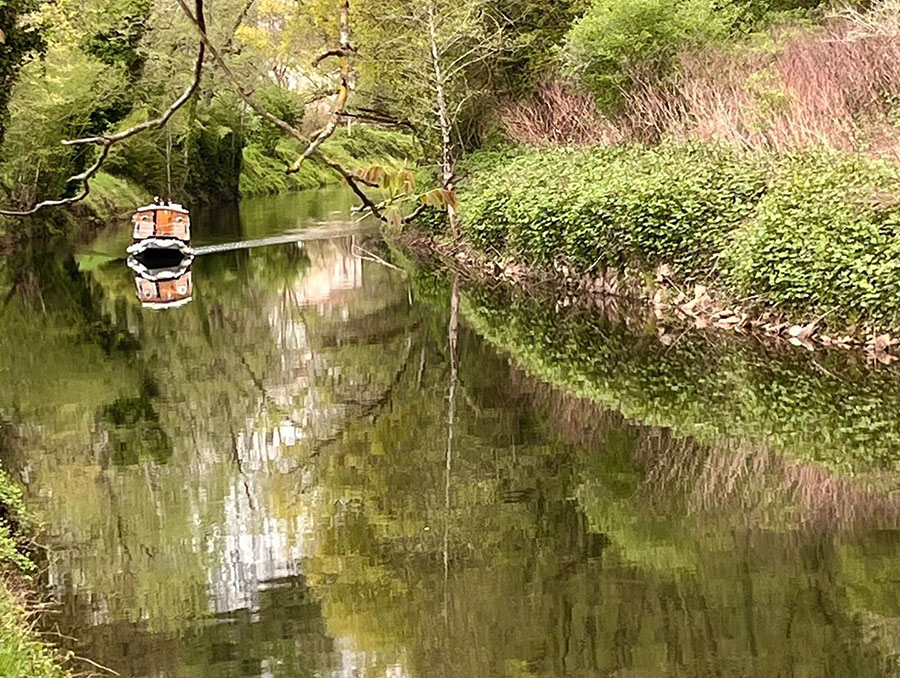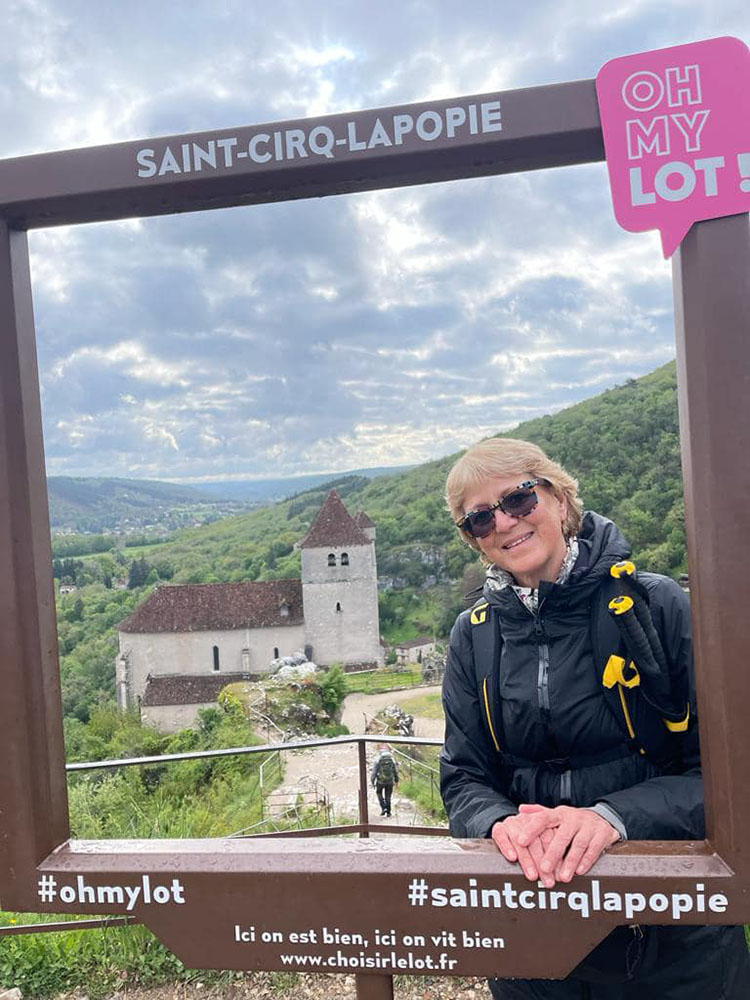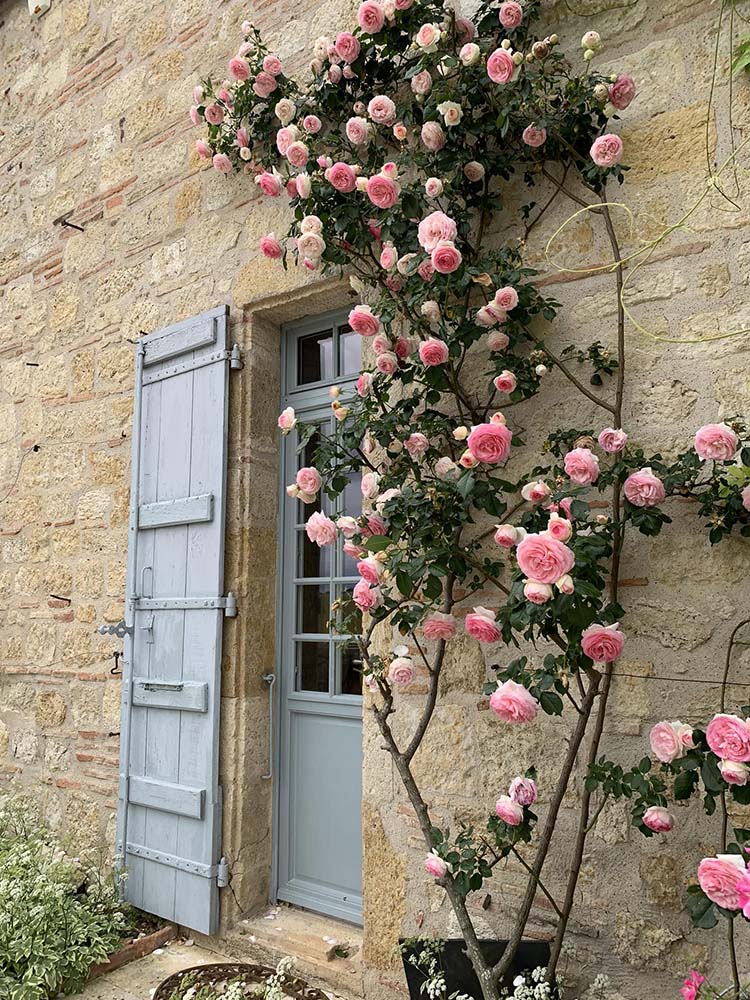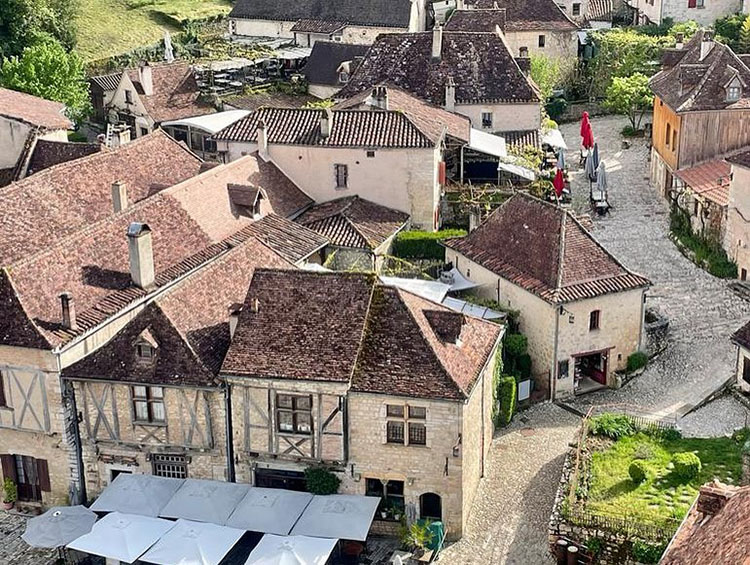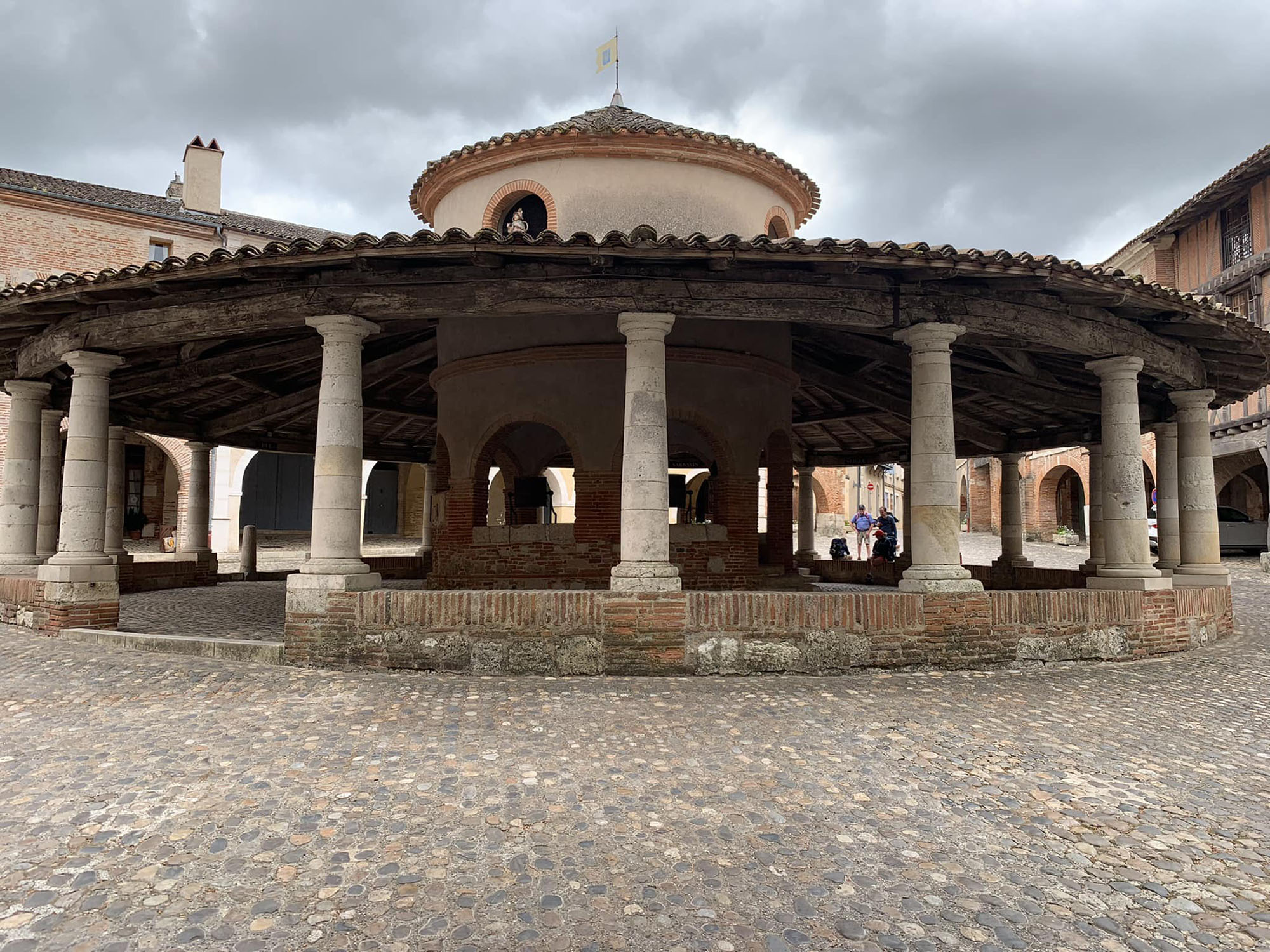
5000 EURO PER PERSON
Single Supplement 750 Euro
Chemin de Saint Jacques, also known by the Romans as via Podensis, is a long-distance footpath that leads to Santiago de Compostela, Spain. On this guided 14-day, 250-kilometer section of the route will transport pilgrims westward across southern France from Figeac to Condom following the footsteps of pilgrims who traversed this route in mass numbers during the eleventh, twelfth, and thirteenth centuries. This lush, lightly trodden region of France lies between the Atlantic to the west and Toulouse to the east, and parallels the scenic Célé, and Lot Rivers for much of the way. While this trip is a continuation of Part 1 from Le Puy en Velay, anyone interested in this region and the history of the Chemin de Saint Jacques is welcome.
Private tailor-made trips are available upon request.
All hotels, breakfasts, six lunches, two dinners (wine not included), van support w/ healthy snacks are included in the tour price.
Itinerary
Day 1: Figeac to Corn-15-K
Welcome to Figeac, birthplace of Jacques Joseph Champollion an acclaimed French archaeologist and Egyptlogist who deciphered the Rosetta Stone.
You’ll certainly want to arrive a day or two prior to the beginning of the tour to explore the antiquities here and to sample the local cuisine.
After an organizational meeting in Figeac (10 AM) plan to walk a pleasant a 15-kilometer stretch of the Chemin de Saint Jacques where we finish our first day in the hamlet of Corn.
Along the way, in Beduer, we switch off the GR-65 and change paths to the GR-651, a variant of the pilgrimage trail which follows the Célé River Gorge all the way to the town of Saint-Cirq-Lapopie later in the week.
Once in Corn we shuttle back to Figeac for our first night’s dinner together. (D= Dinner)
Dinner included.
Day 2: Corn to Saint-Suplice-15-K
Today’s walk begins from where we left off yesterday in the tiny hamlet of Corn. Trekking through the tranquil Valle de la Célé, wedged between high limestone cliffs, the terrain of the walking paths will vary – some along the river and others overlooking the valley floor. We end our walk today in the sleepy hamlet of Saint Suplice and return to Figeac for a second night in our hotel. (B= Breakfast)
Day 3: Saint-Suplice to Cabrerets-25-K
We follow a hilly trail from Saint Suplice and hopefully time will allow us to visit several sites in the area – like the semi-ruinous abbey in Marcilhac-Sur-Célé with faded 15th-century frescoes.
Sleep in Cabrerets at a riverside hotel.
Day 4: Cabrerets to Saint-Cirq Lapopie-12-K
We leave our hotel in Cabrerets and begin a slight uphill climb to the prehistoric caves of Pech Merle where we step back 30,000 years in time… The ornate caves of Pech Merle are part of a multitude of a dozen caves located in a radius of 10-km which bears witness to the oldest traces of human settlements in the Quercy region. The trail then continues through an oak forest until it drops down to the Lot River, at the confluence of the Célé.
We’ll follow along the D662 for just one kilometer where we then cross the Lot River to the hamlet of Bouzies. From here, it’s a 4-kilometer climb up to one of the prettiest villages in France, Saint-Cirq-LaPopie. Sleep Cabrerets.
Day 5: Bouzies to Vers-16-K
From the village of Bouzies, the journey alternates between wide tracks and small sunken paths between low walls, and thick wooded forests and lots of ups and downs as we follow the Lot River to the village of Vers located in the Lot Department and Occitanie Region.
Sleep in Cabrerets
Day 6: Vers to Cahors-21-K
From Vers, we continue paralleling the river through oak woodlands to the grand capital of the Lot department – Cahors, famous for its rich red Malbec wines. This old Roman town is nestled inside a flat loop of the Lot, thus surrounded on three sides by water. We’ll see the town’s signature piece, the fortified three-towered bridge of Le Pont Valentré. Sleep in Cahors
Day 7: Cahors-Lascabanes-23k
From Cahors, we continue our pilgrimage to Lascabanes, where at the end of the day we shuttle back to Cahors. As the River Lot descends gently towards the Garonne, the valley widens and becomes rich with vineyards and orchards. This is the land of the Chasselas grape. Sleep in Cahors
Day 8: Lascabanes – Lauzerte-26-K
We continue our walk from Lascabanes to the bastide village of Lauzerte, first passing through the small hamlet of Montcuq where a 12th-century defence tower keeps watch over the town square. We’ll continue to Lauzerte where we slumber in for the night. Lauzerte, which dominates the Lendou valley, is one of those beautiful fortified medieval villages. Sleep near Lauzerte
Day 9: Lauzerte to Moissac-27-K
From Lauzerte to Moissac, our longest day, will be of rolling landscapes, grapevines and orchards along country roads. Moissac was a major stopping point for pilgrims during the middle-ages with the beautiful Abbey of Saint Pierre, a former Benedictine monastery founded in seventh century. The Tarn River now flows into the Garonne. Sleep: Moissac.
Day 10: Moissac to Auvillar-22-K:
A pleasant stroll through the countryside of the Lot Garonne-Tarn department brings us to the hill town of Auvillar with its unusual market “halle.” Sleep in Auvillar
Day 11: Auvillar to Miradoux-17-K
We then continue along the Chemin to the hamlet of Saint-Antoine where we find beautifully preserved ceiling frescos in the church. In Flamarens, peek into the half-collapsed church and admire the imposing castle in the center of the village. At the end of day in Miradoux, cool off in the church of Saint-Orens and visit the covered market near the town hall. Sleep in Auvillar
Day 12: Miradoux to Lectoure-16-K
We walk from Miradoux to Lectoure today. Lectoure is situated on the banks of the Gers River in the Department of Gers. Originally a Gallo-Roman settlement, it later become the seat of the Diocese of Lectoure. The cathedral was founded in the 12th century and the fortified walls date back to the 5th century. One can plan to soak in the thermal baths or visit one of the many museums, if there is time. Sleep in Lectoure
Day 13: Lectoure to Castelnau-sur l’Auvignon-24 km K
By walking out the front door of our hotel in Lectoure, we re-join the Chemin by turning right. Our trail leads us to an interesting hamlet called La Romieu with its collegiate church and fascination with Les Chats – Cats. The town was founded by two German monks returning from their pilgrimage to Rome in the 11th century.
We’ll finish our walk in Castelnau-sur-l’Auvignon before our transfer back to Lectoure where we celebrate with a farewell dinner.
Day 14: Castelnau-sur to Condom-9-K
Let’s set the record straight, there is no connection between the town and the contraceptive device!
Our last walk is along the GR 65 from Castelnau-sur-l’Auvignon to Condom. Condom, also referred to as Condom-en-Armagnac, is located on the river Baïse.
After lunch, we’ll drive you to the train station in Auch where you’ll find connections to Toulouse, Spain and to Paris.
*This itinerary may change slightly due to accommodation availability, rain, festivals, and spontaneous side trips.
**This is not an endurance race, nor a competition. Please be respectful of all the different paces and walks of life that come together on this group trip.
Location
FAQs
How many kilometers do we hike per day?
We average between 15-27 kilometers per day. We encourage people to ride in the van if feeling fatigued. You’ll want to start a serious walking program the minute you sign up for this trip to ensure you are comfortable with the schedule we have designed. Keep in mind that this is your holiday and if you’d like fewer kilometers, let the guides know and we’ll arrange a comfortable amount for you to walk.
Most pilgrims walking the trail independently walk at least 25 kilometers a day with a heavy pack. With Spanish Steps, we have the luxury of a fully supported van, which carries our baggage and carries us the extra mile when needed.
What kind of hotels do we use?
We use standard hotels and family run guesthouses. They are located along the route in small villages, away from the large cities. All rooms have private baths. The smaller inns have no phone or TV in the room.
Meals: All continental breakfasts, fortified snacks and 2 dinners (wine not included). Most lunches will be light picnics prepared by your guides If you have any dietary restrictions, be sure to let us know what they are before the start of this trip.
How does one get to Figeac?
Check the French train schedule – www.voyages-sncf.com To get to Figeac take the train from Paris or fly to Toulouse and take the train from Toulouse to Figeac.
How does one get from Condom?
Spanish Steps will drive you to the AUCH train station by 5PM. www.sncf.com/fr There are train connection to Toulouse and beyond.
Equipment: The hikes are not fancy. Please refer to the packing list we will send you when you sign up. You are limited to one bag weighing 30-lbs and one daypack to hold items such as your camera, rain gear and water bottle. Hiking boots will be your most important piece of equipment. Please be sure they are well broken in and that you have proper socks before arriving in Spain. All items must fit into your suitcase.
Spending Money: Most people travel with an ATM card. Money machines are everywhere in France but be sure you know your PIN number before departing the US. Do not bring/use traveler’s checks.
What is the average age of the group?
The average age of the hiker on a Spanish Steps tour is 50 years old during the spring and fall months but younger during the summer months. Most trips are a mix of a 40/60 ratio of men to women. I have taken school groups where the age range is 13-20 years old. With an eager heart and a mind full of curiosities, any age is able to walk with us.
Gratuity for local guides and Spanish Steps guides: Our guests often ask for guidelines on tipping tour guides. For a 14-day tour, a tip of 150 Euros per guest for each guide is appropriate if you are pleased with their service. Or about 10 Euros per day, per guide.
What is the terrain like?
This area of France has its ups and downs. There are some long, slow climbs through farming areas, but not Himalayan or Rocky Mountain like terrain. In general, the paths are well worn and are not difficult. We walk along a lot of secondary farming roads, through vineyards, forests, and old country roads. The route is well marked with the red and white stripe.
Single Supplement: Some people would like to be matched with a roommate. I can’t guarantee a match but will try to place you with someone if there are any requests. The price of the single supplement is 600 Euros per person.
References: We would be delighted to share with you some references of former clients who have walked with us. If you would like to contact any former Spanish Steps participants, let us know by calling us.
WWW………. You can find us on the Internet at www.spanishsteps.com. The site contains lots of photos and information about the Camino including an extensive reading list, recipes, and customer comments. Bon Courage!

